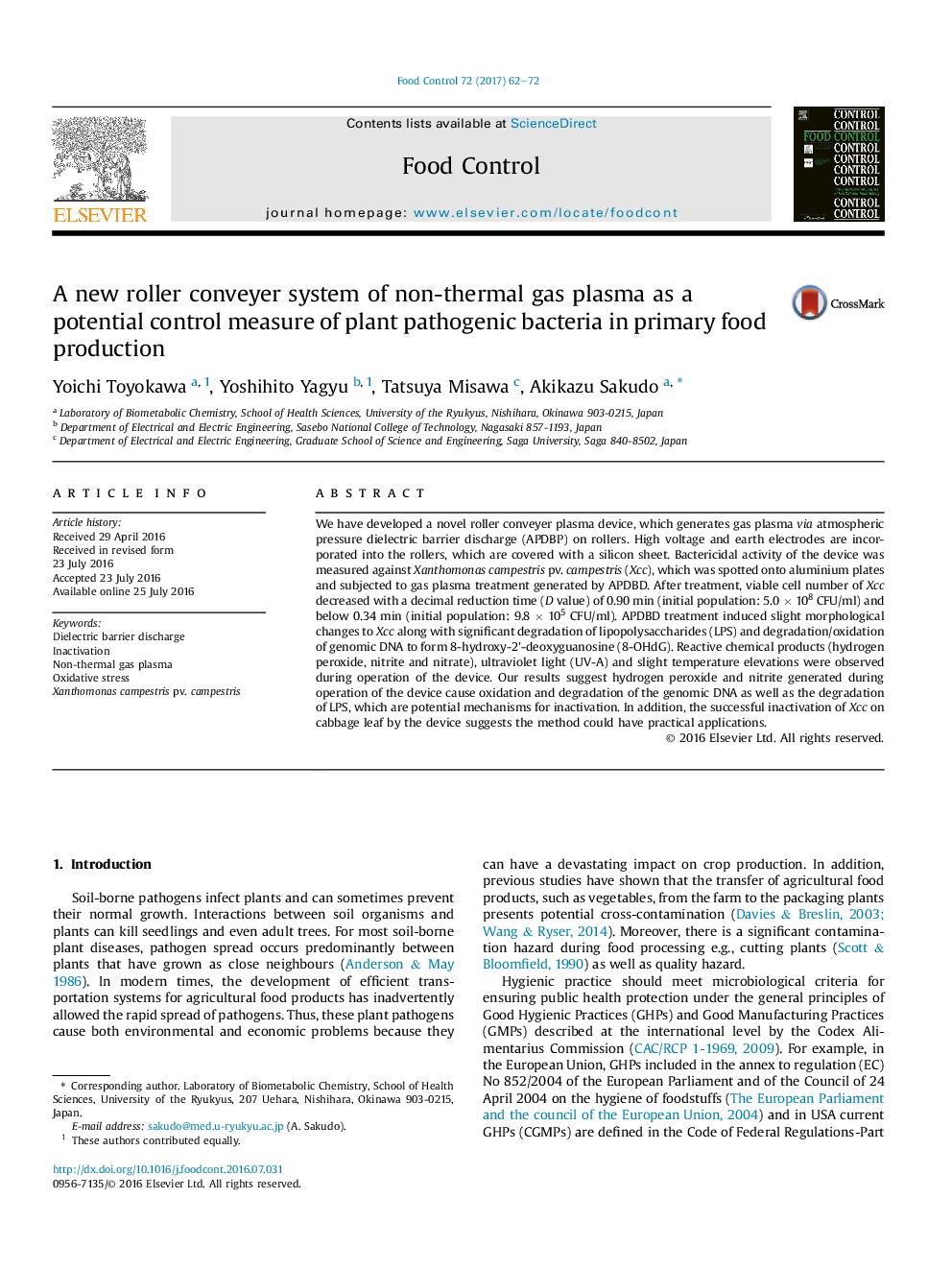| کد مقاله | کد نشریه | سال انتشار | مقاله انگلیسی | نسخه تمام متن |
|---|---|---|---|---|
| 4558949 | 1330401 | 2017 | 11 صفحه PDF | دانلود رایگان |
• We propose a new automated disinfection system during the sorting process.
• The roller conveyer plasma device could inactivate the soil-borne bacterial pathogen Xcc.
• The main mechanism of inactivation involves production of reactive chemical species such as hydrogen peroxide and nitrite.
• Oxidation and degradation of the genomic DNA as well as the degradation of LPS are potential mechanisms for inactivation.
We have developed a novel roller conveyer plasma device, which generates gas plasma via atmospheric pressure dielectric barrier discharge (APDBP) on rollers. High voltage and earth electrodes are incorporated into the rollers, which are covered with a silicon sheet. Bactericidal activity of the device was measured against Xanthomonas campestris pv. campestris (Xcc), which was spotted onto aluminium plates and subjected to gas plasma treatment generated by APDBD. After treatment, viable cell number of Xcc decreased with a decimal reduction time (D value) of 0.90 min (initial population: 5.0 × 108 CFU/ml) and below 0.34 min (initial population: 9.8 × 105 CFU/ml). APDBD treatment induced slight morphological changes to Xcc along with significant degradation of lipopolysaccharides (LPS) and degradation/oxidation of genomic DNA to form 8-hydroxy-2'-deoxyguanosine (8-OHdG). Reactive chemical products (hydrogen peroxide, nitrite and nitrate), ultraviolet light (UV-A) and slight temperature elevations were observed during operation of the device. Our results suggest hydrogen peroxide and nitrite generated during operation of the device cause oxidation and degradation of the genomic DNA as well as the degradation of LPS, which are potential mechanisms for inactivation. In addition, the successful inactivation of Xcc on cabbage leaf by the device suggests the method could have practical applications.
Journal: Food Control - Volume 72, Part A, February 2017, Pages 62–72
